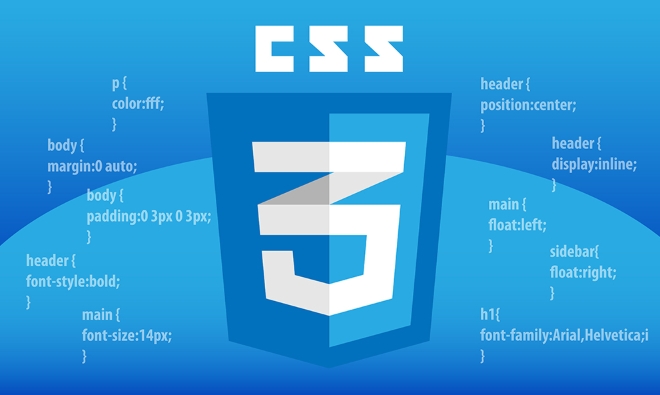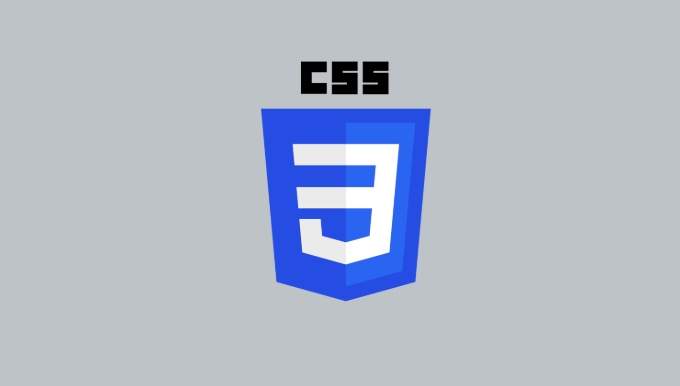CSS Subgrid allows nested grid items to inherit the parent grid’s track structure, enabling child elements to align with the parent’s columns and rows instead of creating independent grids. 1. It solves the previous limitation where nested grids required manual replication of track sizes, which was fragile and hard to maintain. 2. By using grid-template-columns: subgrid or grid-template-rows: subgrid, child grids inherit the parent’s grid lines, ensuring alignment across nested layouts. 3. Key benefits include seamless alignment across nested grids, easier responsive design without duplicated media queries, and reduced maintenance by avoiding repeated track definitions. 4. Common use cases are forms with aligned labels and inputs, card components with consistent internal alignment, and complex dashboards requiring structural continuity. 5. As of 2024, subgrid is supported in modern browsers including Firefox, Chrome, Edge, and Safari, though checking Can I Use is recommended for older browser support. 6. Subgrid only works within a direct grid item, can be applied to columns, rows, or both, and respects normal spacing and alignment properties. 7. Example: in a form, each row can be a grid item using grid-column: span 2 with grid-template-columns: subgrid, allowing labels and inputs to align across rows using the shared column structure. Subgrid ensures true layout continuity from parent to child grids, making complex, aligned UIs significantly easier to build and maintain.

CSS Subgrid is a powerful feature introduced as part of the CSS Grid Level 2 specification that allows nested grid items to inherit the track (column and row) structure of their parent grid. In simpler terms, it lets child elements inside a grid item participate in the parent’s grid layout, rather than creating their own independent grid.

This solves a long-standing limitation in CSS Grid: before subgrid, when you placed a grid container inside a grid cell, it couldn’t align its columns or rows with the parent grid unless you manually recreated the same track sizes — which was fragile and hard to maintain.
How Subgrid Works
Normally, when you define a grid item as a grid container, it sets up its own separate grid context. With subgrid, instead of redefining columns and rows, the inner grid can reuse the parent’s grid lines.

You apply subgrid using the grid-template-columns or grid-template-rows properties with the value subgrid:
.parent {
display: grid;
grid-template-columns: 1fr 2fr 1fr;
grid-template-rows: 100px 200px;
}
.child {
display: grid;
grid-template-columns: subgrid;
grid-column: span 3;
}In this example, the .child element uses the same column structure as .parent, and any grid children inside .child can align with the parent’s columns.

Key Benefits of Subgrid
- Alignment across nested grids: Elements inside nested containers can align perfectly with the parent grid’s columns and rows.
- Responsive design made easier: You don’t have to duplicate media queries or track definitions in child grids.
- Less brittle layouts: Avoids repeating track sizing in multiple places, reducing maintenance overhead.
Common Use Cases
- Forms with aligned labels and inputs: When each form field is in a grid item, subgrid ensures labels and inputs line up across different parent grid cells.
- Card components in a grid: Cards may have internal structure (title, image, footer), and subgrid helps align internal elements across multiple cards.
- Complex dashboards or data layouts: Where nested sections must align with an overall page grid.
Browser Support and Usage Notes
As of 2024, CSS Subgrid is supported in most modern browsers, including Firefox, Chrome, Edge, and Safari (with some minor caveats in older versions). However, it’s still wise to check current support on Can I Use if you're targeting older environments.
Also note:
- Subgrid only works within a grid item — the parent must be a grid container.
- You can use
subgridon columns, rows, or both. - Margins, paddings, and alignment still apply normally.
Example: Aligning Form Fields
.form-grid {
display: grid;
grid-template-columns: subgrid;
grid-column: span 2;
}
.form-label {
grid-column: 1;
}
.form-input {
grid-column: 2;
}Here, even though each form row is a grid item in the main layout, its internal elements can align across rows using the shared column structure.
Basically, subgrid brings true layout continuity from parent to child grids — making complex, aligned UIs much easier to build and maintain. It’s not magic, but it feels like it.
The above is the detailed content of What is CSS Subgrid?. For more information, please follow other related articles on the PHP Chinese website!

Hot AI Tools

Undress AI Tool
Undress images for free

Undresser.AI Undress
AI-powered app for creating realistic nude photos

AI Clothes Remover
Online AI tool for removing clothes from photos.

Clothoff.io
AI clothes remover

Video Face Swap
Swap faces in any video effortlessly with our completely free AI face swap tool!

Hot Article

Hot Tools

Notepad++7.3.1
Easy-to-use and free code editor

SublimeText3 Chinese version
Chinese version, very easy to use

Zend Studio 13.0.1
Powerful PHP integrated development environment

Dreamweaver CS6
Visual web development tools

SublimeText3 Mac version
God-level code editing software (SublimeText3)
 CSS tutorial for creating loading spinners and animations
Jul 07, 2025 am 12:07 AM
CSS tutorial for creating loading spinners and animations
Jul 07, 2025 am 12:07 AM
There are three ways to create a CSS loading rotator: 1. Use the basic rotator of borders to achieve simple animation through HTML and CSS; 2. Use a custom rotator of multiple points to achieve the jump effect through different delay times; 3. Add a rotator in the button and switch classes through JavaScript to display the loading status. Each approach emphasizes the importance of design details such as color, size, accessibility and performance optimization to enhance the user experience.
 Addressing CSS Browser Compatibility issues and prefixes
Jul 07, 2025 am 01:44 AM
Addressing CSS Browser Compatibility issues and prefixes
Jul 07, 2025 am 01:44 AM
To deal with CSS browser compatibility and prefix issues, you need to understand the differences in browser support and use vendor prefixes reasonably. 1. Understand common problems such as Flexbox and Grid support, position:sticky invalid, and animation performance is different; 2. Check CanIuse confirmation feature support status; 3. Correctly use -webkit-, -moz-, -ms-, -o- and other manufacturer prefixes; 4. It is recommended to use Autoprefixer to automatically add prefixes; 5. Install PostCSS and configure browserslist to specify the target browser; 6. Automatically handle compatibility during construction; 7. Modernizr detection features can be used for old projects; 8. No need to pursue consistency of all browsers,
 Creating custom shapes with css clip-path
Jul 09, 2025 am 01:29 AM
Creating custom shapes with css clip-path
Jul 09, 2025 am 01:29 AM
Use the clip-path attribute of CSS to crop elements into custom shapes, such as triangles, circular notches, polygons, etc., without relying on pictures or SVGs. Its advantages include: 1. Supports a variety of basic shapes such as circle, ellipse, polygon, etc.; 2. Responsive adjustment and adaptable to mobile terminals; 3. Easy to animation, and can be combined with hover or JavaScript to achieve dynamic effects; 4. It does not affect the layout flow, and only crops the display area. Common usages are such as circular clip-path:circle (50pxatcenter) and triangle clip-path:polygon (50%0%, 100 0%, 0 0%). Notice
 What is the difference between display: inline, display: block, and display: inline-block?
Jul 11, 2025 am 03:25 AM
What is the difference between display: inline, display: block, and display: inline-block?
Jul 11, 2025 am 03:25 AM
Themaindifferencesbetweendisplay:inline,block,andinline-blockinHTML/CSSarelayoutbehavior,spaceusage,andstylingcontrol.1.Inlineelementsflowwithtext,don’tstartonnewlines,ignorewidth/height,andonlyapplyhorizontalpadding/margins—idealforinlinetextstyling
 Styling visited links differently with CSS
Jul 11, 2025 am 03:26 AM
Styling visited links differently with CSS
Jul 11, 2025 am 03:26 AM
Setting the style of links you have visited can improve the user experience, especially in content-intensive websites to help users navigate better. 1. Use CSS's: visited pseudo-class to define the style of the visited link, such as color changes; 2. Note that the browser only allows modification of some attributes due to privacy restrictions; 3. The color selection should be coordinated with the overall style to avoid abruptness; 4. The mobile terminal may not display this effect, and it is recommended to combine it with other visual prompts such as icon auxiliary logos.
 How to create responsive images using CSS?
Jul 15, 2025 am 01:10 AM
How to create responsive images using CSS?
Jul 15, 2025 am 01:10 AM
To create responsive images using CSS, it can be mainly achieved through the following methods: 1. Use max-width:100% and height:auto to allow the image to adapt to the container width while maintaining the proportion; 2. Use HTML's srcset and sizes attributes to intelligently load the image sources adapted to different screens; 3. Use object-fit and object-position to control image cropping and focus display. Together, these methods ensure that the images are presented clearly and beautifully on different devices.
 Demystifying CSS Units: px, em, rem, vw, vh comparisons
Jul 08, 2025 am 02:16 AM
Demystifying CSS Units: px, em, rem, vw, vh comparisons
Jul 08, 2025 am 02:16 AM
The choice of CSS units depends on design requirements and responsive requirements. 1.px is used for fixed size, suitable for precise control but lack of elasticity; 2.em is a relative unit, which is easily caused by the influence of the parent element, while rem is more stable based on the root element and is suitable for global scaling; 3.vw/vh is based on the viewport size, suitable for responsive design, but attention should be paid to the performance under extreme screens; 4. When choosing, it should be determined based on whether responsive adjustments, element hierarchy relationships and viewport dependence. Reasonable use can improve layout flexibility and maintenance.
 What are common CSS browser inconsistencies?
Jul 26, 2025 am 07:04 AM
What are common CSS browser inconsistencies?
Jul 26, 2025 am 07:04 AM
Different browsers have differences in CSS parsing, resulting in inconsistent display effects, mainly including the default style difference, box model calculation method, Flexbox and Grid layout support level, and inconsistent behavior of certain CSS attributes. 1. The default style processing is inconsistent. The solution is to use CSSReset or Normalize.css to unify the initial style; 2. The box model calculation method of the old version of IE is different. It is recommended to use box-sizing:border-box in a unified manner; 3. Flexbox and Grid perform differently in edge cases or in old versions. More tests and use Autoprefixer; 4. Some CSS attribute behaviors are inconsistent. CanIuse must be consulted and downgraded.






